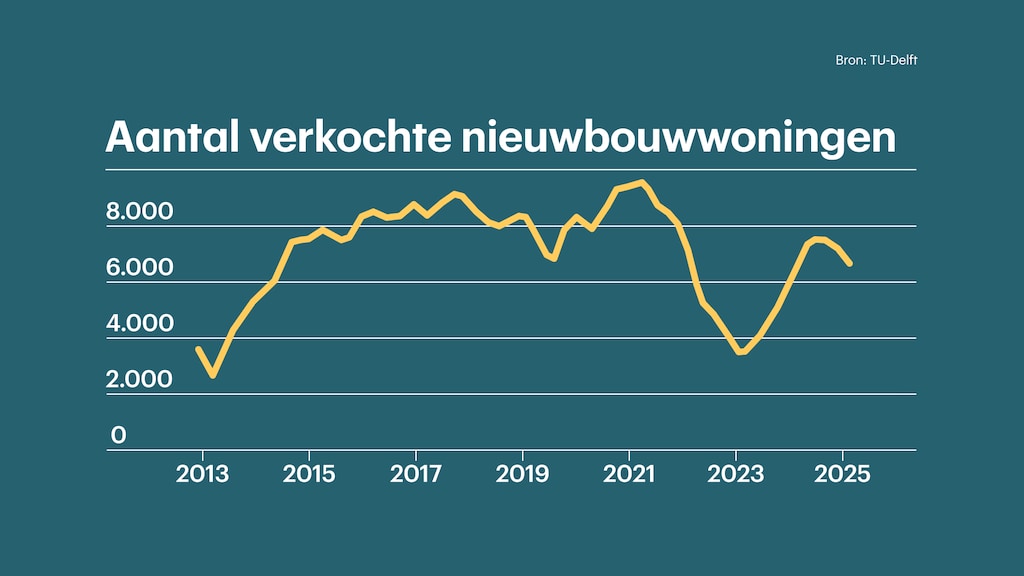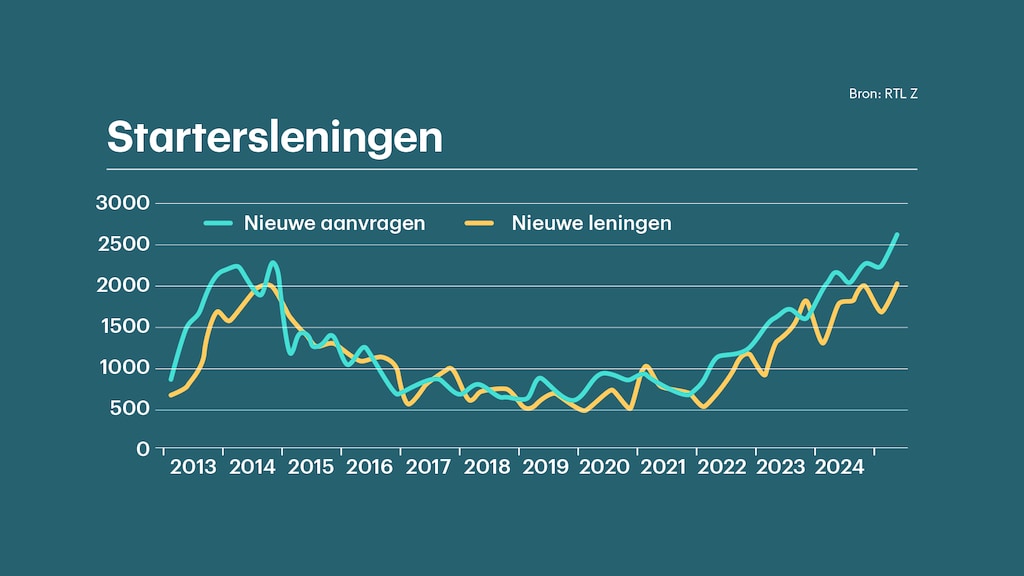Target of 100,000 new homes not achieved again, government and market fail year after year

Demand for new homes is enormous, and potential buyers have ample budgets. Yet, new home construction is struggling to gain momentum. Last quarter, 16,000 new homes were completed, over 1,000 fewer than in the same period last year.
Also fewer building permitsOver the past two quarters, the number of building permits issued also fell by 17 percent. Several years often pass between the permit and the completion of a home, meaning that new construction will not grow towards the target of 100,000 new homes per year in the coming years.
Professor Boelhouwer, affiliated with Delft University of Technology, expects it will take at least two years before this downward trend in completed homes is reversed. "It's good to have a target, but we've never achieved it."

The reasons for this failure are diverse. First, a lot of construction is currently taking place within built-up areas, the so-called infill projects. Approximately 70 percent of construction projects are currently taking place in places where people already live and work. These are construction sites that often have more stringent requirements, numerous objections, and longer construction times.
Construction companies prefer to build on vacant land. They can build more standardized homes there, which are usually cheaper and less complex to build. Moreover, private investors who subdivide or add to existing homes to create more housing are also scarce due to stricter regulations.
Investors are neededMeanwhile, construction costs have also risen sharply. Building a house is now over 30 percent more expensive than a few years ago. And then there's the effect of international investors currently ignoring the Netherlands. Foreign pension funds generally like to invest in Dutch rental properties because of the reliable rental income.
Watch the full broadcast of the RTL Z House Index with Peter Boelhouwer here:
But now that new regulations and taxes are added or removed almost annually, the Netherlands has fallen out of favor. "You really need those investors, because a housing development always consists of multiple types of homes. If one category doesn't go through, the rest, like social housing and owner-occupied homes, won't get off the ground either," warns Boelhouwer.
GamechangerThe total supply of existing homes for sale has increased again, with nearly 20 percent more home sales recorded in the last quarter than in 2024. However, according to Boelhouwer, this is mainly due to the massive sale of former rental properties, which is a temporary situation.
Boelhouwer: "The Affordable Rent Act is a game changer because it has significantly increased supply. People who can buy are now doing so, which is a real boost to the housing market."
Many former rental properties are slightly smaller and therefore slightly cheaper than average. This means that in the first half of this year, 57 percent of homes sold were in the hands of buyers aged 35 or younger. This is a good indication that first-time buyers are currently seizing the housing market.
This is also reflected in the number of starter loans granted. This is a scheme where first-time buyers receive assistance from the municipality to bridge the gap between the maximum loan amount and the asking price.

RTL Nieuws




